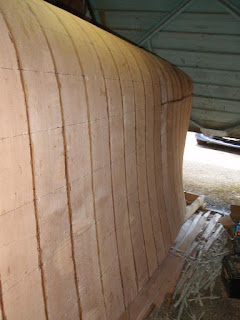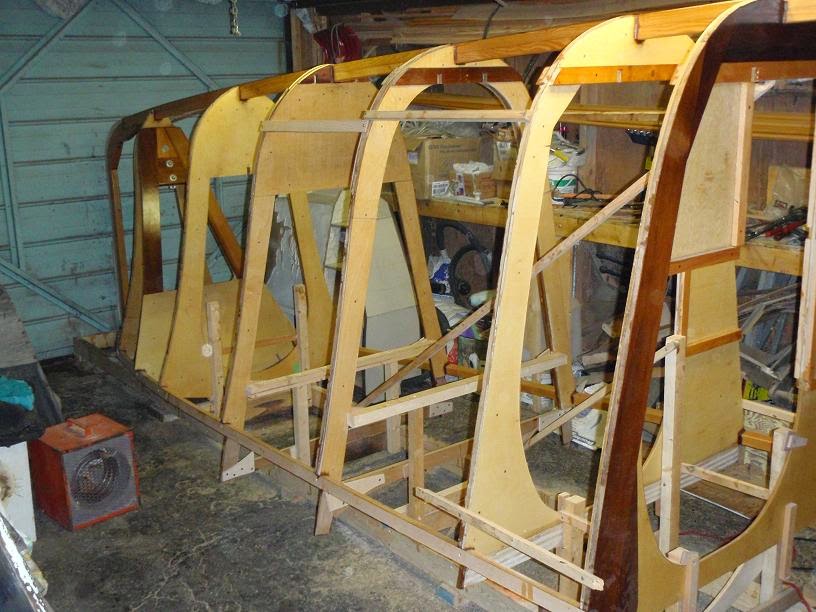1st layer of 1/8" cedar veneer done!
Nice shape......... :-)
Wow, we finally have a hull !
As the Gougeon book cautions, progress is slow on the 1st layer.
Carefully fitting and gluing each veneer edge to edge, and cleaning the interior of the hull, takes time.
Averaged out to about 1 hour per veneer.
There were 55 veneers down each side, so:
110 hrs to complete the 1st layer.
Port side forward.
Starboard side looking aft.
Pencil lines show location of stringers for stapling the 2nd layer.
Port side looking aft.
Port side looking forward.
Starboard side looking forward.
Tightly curved bow veneers required extra pressure that staples would not hold.
3/8" plywood "buttons" held with screws worked well.
With wax paper to prevent adhesion of the buttons.
Keel area will need some fairing with the belt sander,
and epoxy filler in the gap.



















































